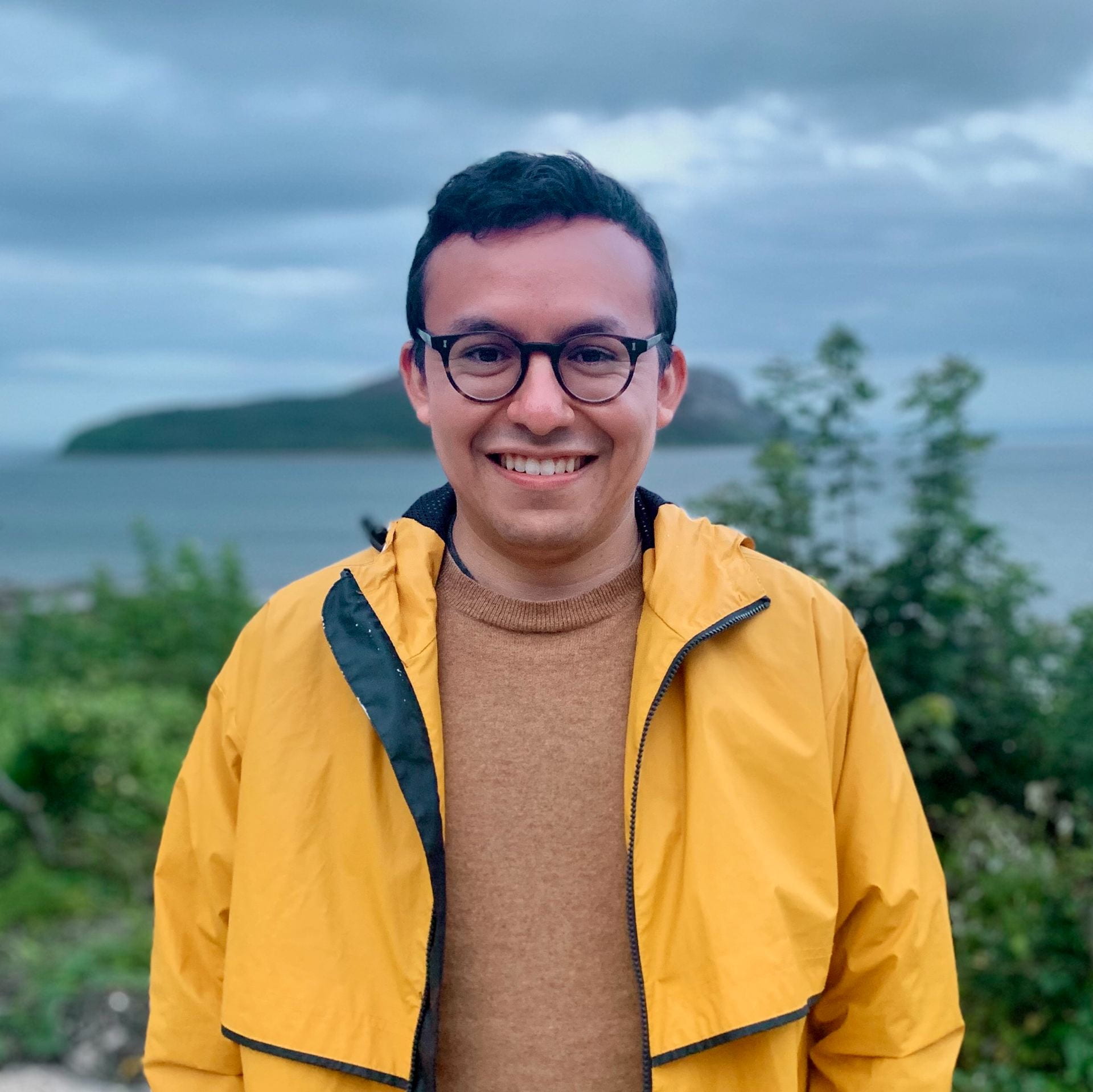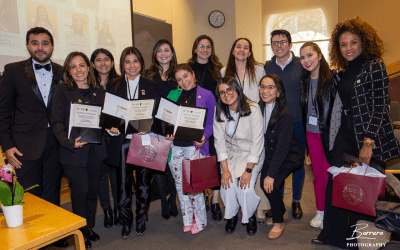
About the Author
Manny Medrano is a Ph.D. student in Latin American History at Harvard. His work centers material culture, collecting and knowledge formation in a global context, with a focus on the Andes. He holds a BA in Applied Mathematics from Harvard College and an MPhil in Social Anthropology from the University of St Andrews.
Collecting History
Nächste Station: Dammtor. The automated voice caught my attention as the S-Bahn train slowed to a stop under an imposing overhang of steel and glass. I shuffled onto the platform with a crop of Hamburg office workers a little before 9:30 a.m. The same thoughts come to mind every time I start a new Monday of research in European museums with off-cycle hours: Where do they work? What’s in the briefcases? How many are running late?
I rummaged through my own bag as I joined them on the escalator, trying to shake the feeling that I had forgotten something. But the concern was a needless one, I reminded myself, as I hadn’t even traveled to Germany with the materials that I feared I was missing: a DSLR camera, wooden rods, a tape measure, nitrile gloves. These would have been unfortunate things to forget in 2018, when I first worked in Hamburg’s ethnological museum, the MARKK. I remember making a beeline from the station to the Museum, with no knowledge of the city or the language. The indecipherable street signs were of little import back then, however, as I had come to crack a different kind of text: three Andean khipus, or knotted-string records, among the hundreds of thousands of non-Western objects in the Museum’s collections.
![]()
The measurements in 2018 were tedious, progress slow. I leaned over the table in the basement workroom, my lower back objecting, as I stretched the tape measure to record the length of each string. I used the wooden prods to rotate each cord ever so slightly, noting the number of knots, their distance from each other and their structural characteristics. A bright lamp bent toward the surface highlighted the multicolored yarns, which I photographed diligently. Each string became a scribbled row on my humble printout: a sheet containing each khipu’s transcribed features. Still unable to read khipus, scholars have made these raw data tables – mine among the about 650 other already-catalogued specimens—the fuel of ongoing decipherment efforts.
For the Incas and other Andean peoples, the khipu was a means of recording numerical and non-numerical information, enabling recordkeeping, administration and the preservation of historical knowledge. For its students today, it is a largely opaque primary source; though we can read the knots on most khipu strings as numbers, what they were counting remains illegible, let alone who recorded them and why.
Memories of backaches returned as I passed one of the MARKK khipus in its display case again this July. My destination this time around, however, was not the Museum’s workrooms but its library. Now with reading and speaking knowledge of German, I had returned to the MARKK five years later to pursue a new approach.
I am currently writing the khipu’s global story from too-often-overlooked museum and institutional archives in unexpected places across the Americas and Europe. It is a doctoral project that, in its early stages thus far, has involved learning new languages, surveying artifact collections, scouring archival finding aids and chasing leads from Berkeley to Berlin. It calls for an itinerant research methodology that involves short stays in cities large and small. And it requires tracing artifact assemblages from the Andes across space and time, reconstructing histories of dispersion and loss. It is, in two senses, collecting history.
The first sense concerns the history of collecting. The MARKK is just one of over 120 institutions worldwide that hold khipus, plucked by the hundreds from sandy prehispanic and colonial-era Andean graves, stockpiled and exported in large part to Germany and surrounding nations at the turn of the 20th century. The MARKK’s khipus, which entered the collection some decades later, nonetheless present the same challenge as earlier accessions: we are told little if anything of where and by whom the cordage was excavated. Unpublished museum records often reveal little more than dates, surnames and cursory mentions of Peruvian regions and towns. This is a domain rife with antiquarian inheritances, one in which Andean objects—and, perhaps most harrowingly, “mummified” human remains—were spread far and wide, accessioned and described in countless languages unknown to their initial creators.
The German case involved an especially informal trade. Arriving as medical practitioners, textile merchants, engineers and more, the most active German collectors spent decades in Peru’s coastal cities, employing local Andean laborers to accompany them on private excursions to excavate ancient “Inca” tombs. One of the bequests in the MARKK archives offers an uncommon glimpse of these activities from the Peruvian north. Hans Heinrich Brüning’s personal notebooks preserve the names and addresses of the many huaqueros, or tomb-raiders, upon which he relied for a steady stream of finds. An engineer by training, he rationalized the sacking of graves as a salvage operation to recover antiquities from rapidly encroaching development and infrastructure projects. Unlike the other prominent German collectors, however, most of his acquisitions remained in Peru—they entered the country’s first regional museum, which to this day bears his name. Though Brüning was not the source of the MARKK’s khipus, his records evince the proto-archaeological atmosphere in which Andean creations were so often deemed extractable and rare, by both Peruvians and foreigners alike.

Locations and quantities of Andean khipus in global collections, with Hamburg’s MARKK depicted in red. (Adapted from Medrano, Manuel. 2021. Quipus: Mil años de historia anudada en los Andes y su futuro digital. Lima: Planeta.)
Brüning’s bequest also raises the second sense of this Student View’s title: the collecting of history. The engineer’s correspondence reveals him as far more than an amasser of things; he negotiated simultaneously with the stewards of private and institutional archival holdings to obtain thousands of pages of original and copied colonial-era documents, which survive in various states of conservation in the MARKK. Among them are native wills, court records and land titles that enclose their own narratives of inheritance, dispute and change. The Museum’s prehispanic objects, colonial papers and 20th-century correspondence describing their acquisition are, at least in part, a reflection of Brüning’s attempt to collect comprehensively.
Yet on the walk back to Dammtor Station after a long day sifting through Brüning’s papers, I couldn’t help but think globally. With almost 1,400 surviving khipus spread across 22 countries, most of which are held in institutions with their own archives, could any single repository—even if conceived comprehensively in its time—approach representativeness?
Those attuned to the historical legacies of the antiquities trade would be hard-pressed to imagine so. But perhaps the more challenging observation for such an audience (myself included) is that writing stories of circulating objects requires compiling histories as well. In the wayfaring research called for by a project like my own, could not one think of two collecting orders: a primary collecting, by which objects and documents were removed indiscriminately from their original contexts by historical actors; and a secondary, restoratively motivated collecting, one that consults these sources across multiple archives and museums to reassemble the story of their dispersal?
I cannot but feel a solemn irony. The writing of collecting histories necessitates its own type of collecting. It would only deepen this irony to acknowledge the unintended ways in which peripatetic archival research mirrors how khipus themselves functioned: they traveled between administrators who may have spoken different Andean language dialects; they were stored in multitudes of archives for selective consultation by specialists distant and near; and they often reached a final resting place far afield from where they were initially created. One cannot proceed, however, without remaining ever mindful that the khipu’s divergent 19th and 20th-century international paths were seldom ones motivated by Peruvian priorities and goals.
Nor can one ignore the practical realities of a “global” khipu corpus. For whatever progress has come about in its historical and ongoing study is itself a reflection of disparities in funding, access and geography. The itinerant archival summer is a privilege not to be taken lightly. Upon my return, I can merely affirm that my sense of loss for scattered and decontextualized collections is exceeded only by the obligation I feel—and dare one say, we all should feel—to tell their far-reaching stories with nuance and care.
The S-Bahn was more crowded on the 6:15 p.m. return trip; suits and briefcases gave way to laughs and crisscrossing discussions of weekend plans. Twenty-five minutes later, with a takeaway dinner in hand, I switched on the lights in my Airbnb. I sorted the day’s collection of photographs in my computer, marking the entries in my list that I would begin with the next morning. Despite a couple of blurry images that needed redoing, it was, all in all, a full and productive day. As evening turned to night, I explored another German museum’s website. Thousands of pixelated icons – a few angular khipus among them – flashed across the screen as I scrolled through its collections database. As for the archives page? A paragraph on the importance of provenance research and a curator’s email address. I copied the address and began drafting a new email: Sehr geehrter Herr Dr. …
More Student Views
Río Piedras: As a Desert Flower Blooms in the Night
The sunset of my first day at the Harvard Puerto Rico Winter Institute (HPRWI) painted the sky with violet and magenta. It felt as if the day had just begun.
Colombian Women Who Empower Dreams
English + Español
The verraquera of Colombian women knows no bounds. This was the message left with me by the March 30 symposium, “Empowering Dreams: 1st symposium in honor to Colombian women at Harvard.”
A Review of Born in Blood and Fire
The fourth edition of Born in Blood and Fire is a concise yet comprehensive account of the intriguing history of Latin America and will be followed this year by a fifth edition.




